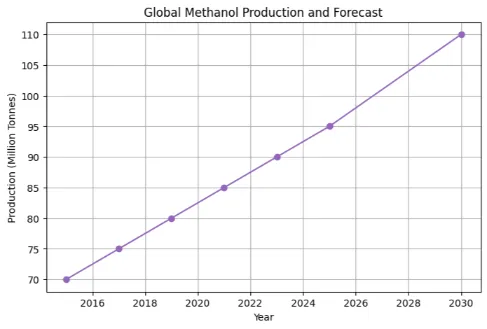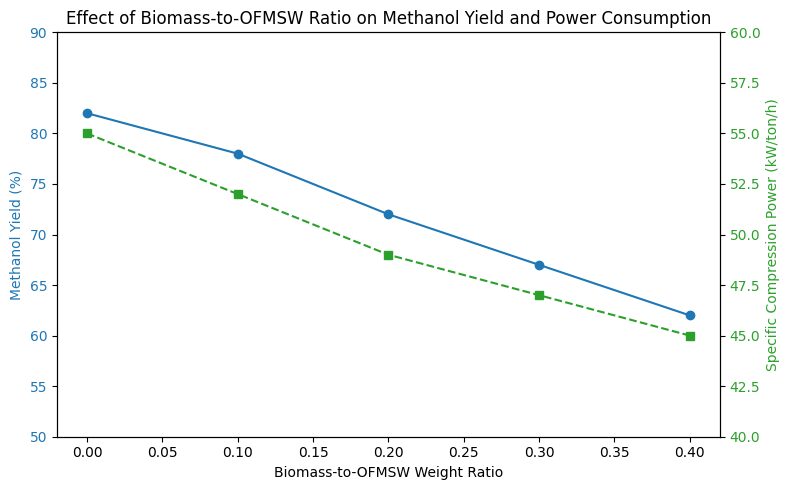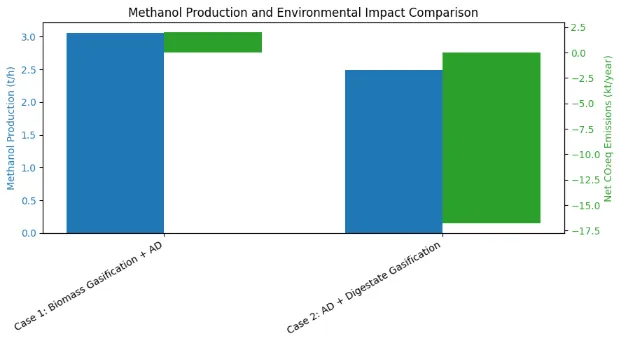
Your Comprehensive Guide to Biomethanol
Application, Benefits, and the Path to a Sustainable Future
As the world intensifies its search for sustainable energy alternatives, biomethanol has emerged as a promising biofuel that addresses both environmental and economic concerns. This comprehensive guide explores what biomethanol is, its production process, key applications, environmental and economic benefits, and its pivotal role in shaping a sustainable future.
What is Biomethanol?
Biomethanol is a renewable and sustainable methanol derived from biomass feedstocks like agricultural residues, forest byproducts, and organic waste. Unlike fossil-fuel-derived conventional methanol, biomethanol uses carbon-rich feedstocks that belong to the natural carbon cycle, resulting in a cleaner and more sustainable source of energy and chemicals.
How is Biomethanol Produced?
The production of biomethanol involves several advanced processes designed to maximize resource utilization and minimize environmental impact. The typical production stages include:
Feedstock Collection
Biomass sources like crop residues (e.g., rice straw, bagasse), wood chips, and organic waste are collected.
Pre-treatment
Biomass is pre-treated to break down complex structures and prepare it for gasification.
Gasification
The pre-treated biomass is processed into synthesis gas (syngas)—a blend of carbon monoxide, carbon dioxide, and hydrogen—via high-temperature gasification.
Syngas Cleaning
Syngas is purified to eliminate impurities in order to efficiently synthesize methanol.
Methanol Synthesis
The purified syngas is catalytically converted to yield biomethanol.
New technologies today employ waste CO₂ from fermentation and hydrogen generated through water electrolysis (renewables-powered) to further maximize yields, developing a closed carbon loop that has a very low greenhouse gas footprint.
Principal Uses of Biomethanol
Biomethanol’s flexibility allows for its utilization in many fields:
Transportation Fuel
Biomethanol may be mixed with gasoline or diesel or directly used in converted engines to provide an alternative, low-carbon vehicle fuel.
Chemical Industry
It is used as a feedstock for the manufacture of formaldehyde, acetic acid, and other chemicals, facilitating the greening of supply chains.
Power Generation
Biomethanol has applications in fuel cells and turbines for power generation, particularly in decentralized rural areas.
Marine and Aviation Fuels
While tightening regulations on emissions make alternatives more important, biomethanol is increasingly seen as a cleaner fuel for shipping and possibly for aviation.
Environmental Benefits of Biomethanol
Significant Greenhouse Gas Reduction
Biomethanol production and use offer a marked reduction in greenhouse gas emissions compared to fossil-based methanol. Studies show that the carbon footprint of biomethanol from rice straw is as low as 0.347 kg CO₂e per kg, far lower than conventional methanol. The closed carbon cycle ensures that carbon released during combustion is offset by the carbon absorbed during biomass growth, supporting net-zero emissions goals.
Waste-to-Value Conversion
Biomethanol production utilizes agricultural and forestry residues, transforming waste materials into valuable energy resources. This not only reduces landfill use but also mitigates methane emissions from decomposing organic matter.
Lower Air and Marine Pollution
Compared to traditional fuels, biomethanol combustion results in lower emissions of sulfur oxides, nitrogen oxides, and particulate matter, contributing to improved air and water quality.
Economic Advantages of Biomethanol
Energy Security and Rural Development
By tapping into locally available biomass, regions can reduce their dependence on imported fossil fuels. Decentralized biomethanol plants can stimulate rural economies, create jobs, and support local energy resilience.
Optimized Resource Utilization
Advanced process modeling and supply chain optimization minimize production costs and emissions, making biomethanol an economically viable alternative even at smaller scales. The integration of byproducts like lignin and surplus bagasse further enhances overall efficiency and profitability.
Support for Circular Economy
Biomethanol production exemplifies circular economy principles by closing resource loops, maximizing the value extracted from waste, and reducing the need for virgin raw materials.
Challenges and Considerations
While biomethanol presents clear benefits, several challenges remain:
- Feedstock Logistics: Efficient collection, transport, and processing of biomass are critical to economic viability.
- Technology Maturity: Gasification and syngas cleaning technologies require further refinement to ensure consistent quality and scalability.
- Policy and Incentives: Supportive regulatory frameworks and incentives are essential to accelerate adoption and investment in biomethanol infrastructure.
Biomethanol vs. Conventional Methanol: A Comparison
| Aspect | Biomethanol | Conventional Methanol |
|---|---|---|
| Source | Biomass (renewable) | Natural gas/coal (fossil) |
| Carbon Footprint | Low (closed carbon cycle) | High (net CO₂ emissions) |
| Environmental Impact | Reduced GHG, air, and marine pollution | Higher emissions, pollution |
| Economic Impact | Supports local economies, jobs | Centralized, fossil-dependent |
| Resource Utilization | Waste-to-value, circular economy | Linear, resource-intensive |
The Path Forward: Biomethanol and a Sustainable Future
Biomethanol is poised to play a transformative role in the global energy transition. Its ability to reduce greenhouse gas emissions, valorize waste, and support rural development aligns with the United Nations Sustainable Development Goals and national net-zero ambitions.
Key Steps for Widespread Adoption
- Investment in R&D: Continued innovation in gasification, syngas cleaning, and catalytic synthesis will drive down costs and improve efficiency.
- Policy Support: Governments can accelerate deployment through mandates, incentives, and support for pilot projects.
- Infrastructure Development: Building integrated supply chains and distribution networks will ensure reliable feedstock supply and product delivery.
- Public Awareness: Educating stakeholders about biomethanol’s benefits will foster acceptance and demand.
Conclusion
Biomethanol stands at the nexus of environmental stewardship and economic opportunity. By leveraging abundant biomass resources and advanced conversion technologies, it offers a sustainable pathway to cleaner fuels, reduced emissions, and resilient energy systems. As countries and industries strive for net-zero emissions and a circular economy, biomethanol’s role will only grow more vital—fueling not just vehicles and industries, but also the global journey toward a sustainable future.


Biomethanol Insights
Explore the latest developments and applications of biomethanol as a sustainable fuel alternative
5 Companies Investing in the Biomethanol Revolution
Discover the leading companies betting big on biomethanol as the sustainable fuel of the future and how their investments are shaping the industry.
Read Article5 Industries That Could Be Transformed by Biomethanol
From shipping to chemicals, explore how biomethanol could revolutionize multiple sectors and drive sustainable industrial transformation.
Read ArticleIs Biomethanol the Key to Carbon-Neutral Transportation?
A deep dive into how biomethanol could provide the solution for decarbonizing transportation networks while maintaining existing infrastructure.
Read ArticleStay Updated on Biofuel Innovations
Subscribe to our newsletter for the latest developments in sustainable fuels and green energy solutions.

